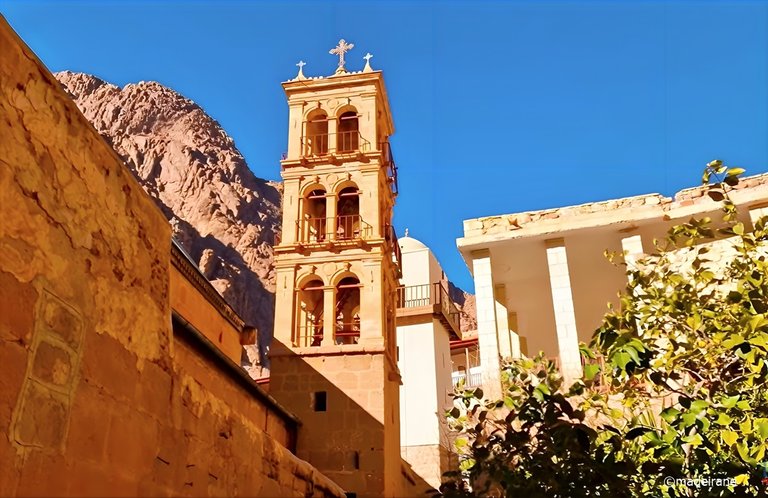
I have already written about the Moses Mount we climbed up. In such beauty, severe and powerful, we imperceptibly descended to the temple itself. The first person who began to build the Monastery of Saint Catherine here was St. Helena, the mother of Emperor Constantine. It is now like a miracle in the desert - olive gardens. And they built a small chapel in honor of the Virgin Mary.
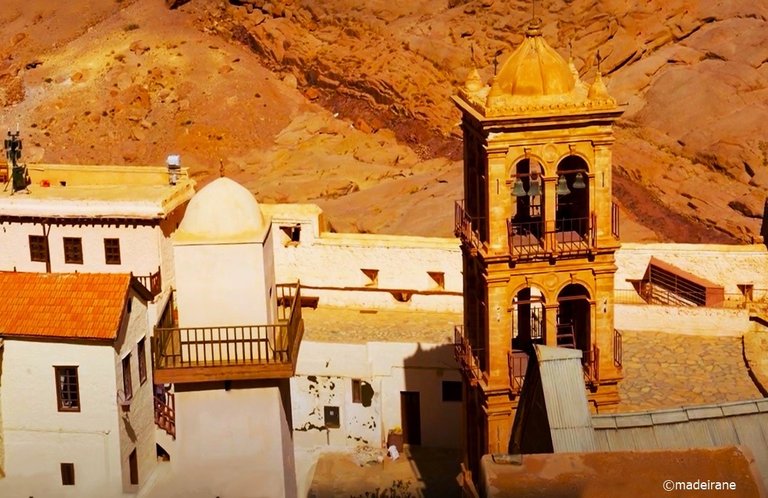
The monastery is located at the foot of Mount Sinai. Around - a huge Egyptian desert. Natural green is, perhaps, only in the vicinity of the monastery. It perfectly harmonizes with ancient buildings, forming an architectural and park ensemble. In other places, it is cultivated artificially.
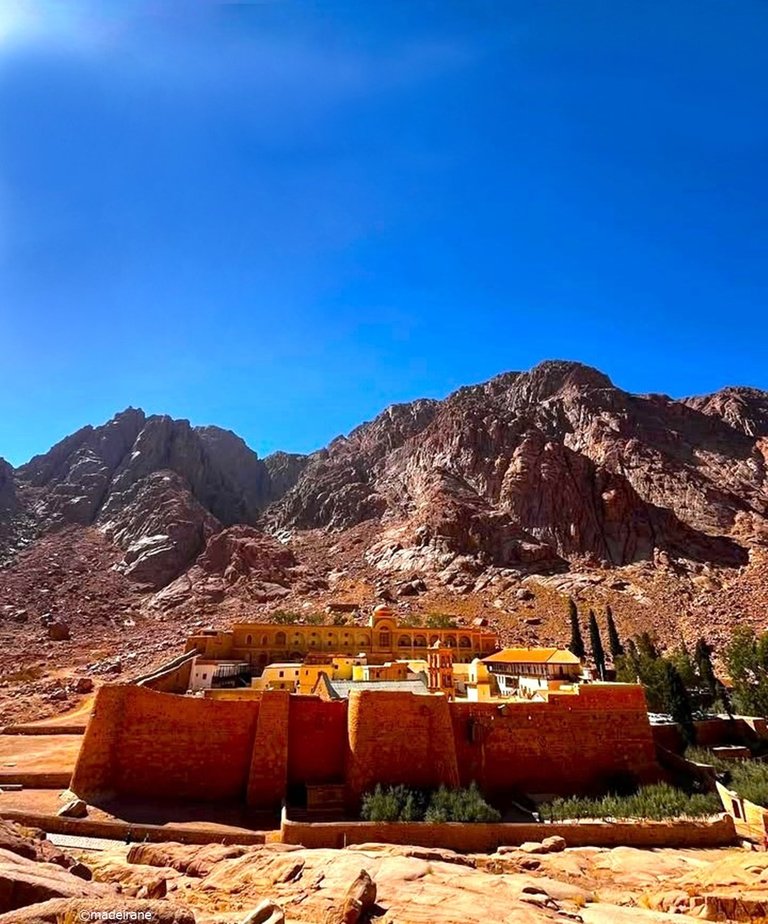

It's an ancient monastery, founded in the IV century. Monks preserve this antiquity to this day: architectural features, temple painting, atmosphere, as well as constitutional features of worship and functioning of the monastery.
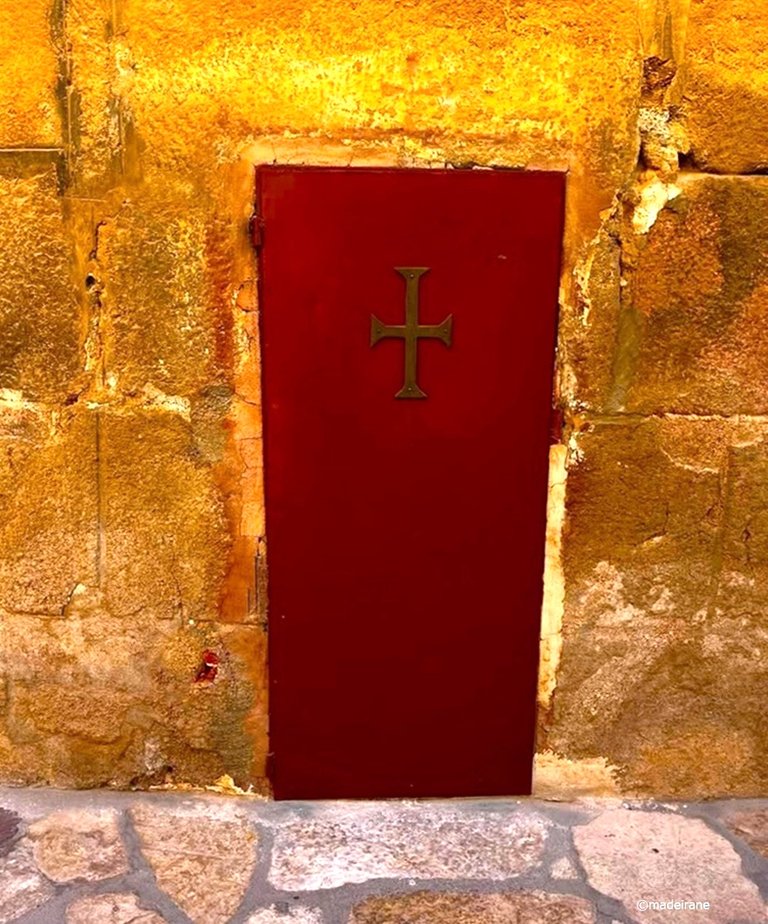
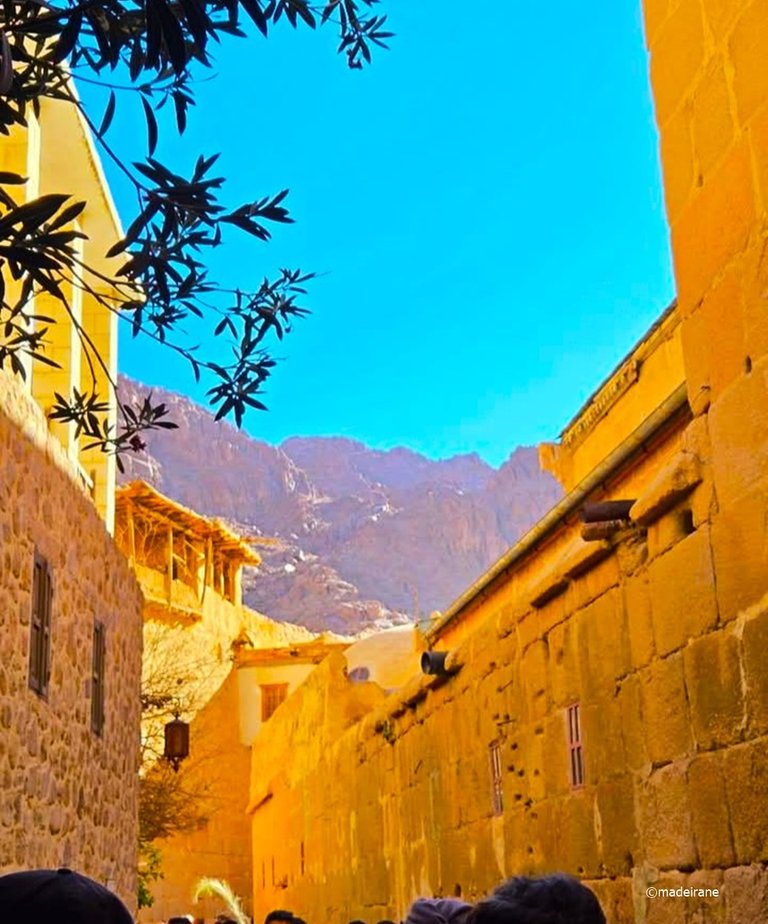
The story of Catherine is very interesting and long. Catherine, who was born as Dorothea, lived in a wealthy family in Alexandria. She was very well-read and wise, rich and honest and simply beautiful. Everyone wanted such a bride as a wife, but she rejected everyone. Once she met an old man in the desert, who said that he knew such a groom, that he would come to her in a dream. And when in a dream she saw the Son of God, who told her that she needed to return to the old man and learn the truth, Catherine believed that Christianity is stronger than paganism. And she was baptized and she then brought faith to the people.
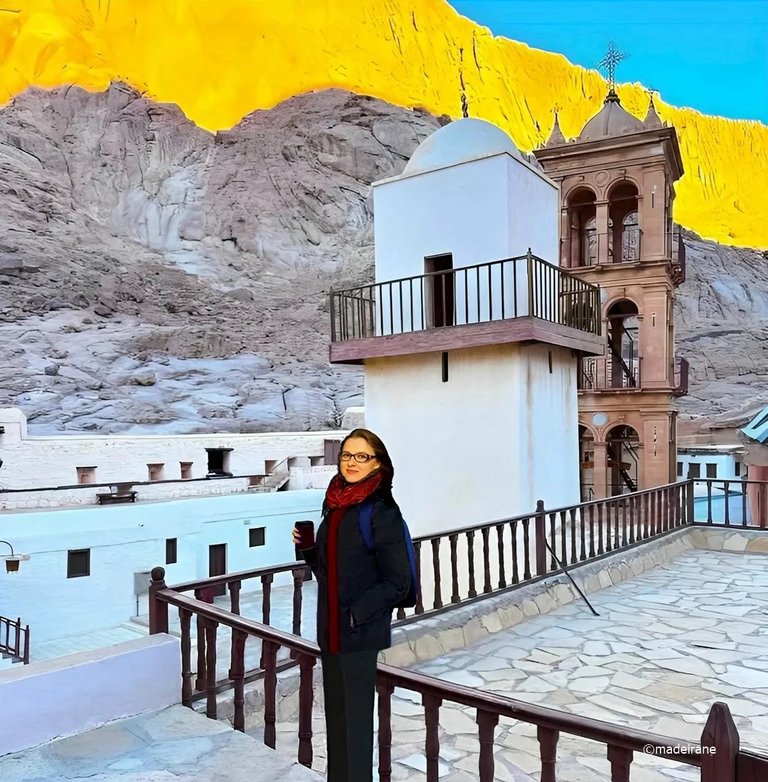
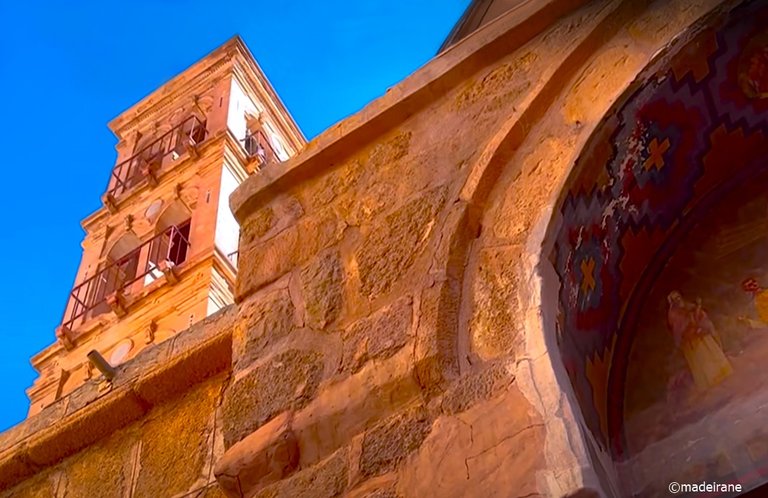
For her Christianity, she was subjected to many tortures in those years. But she did not renounce her faith. And when she was executed, the legend describes how milk, not blood, flowed from her wounds and after the execution her relics disappeared. The angels took her relics to the mountain near the monastery (this is the highest mountain in Sinai), where centuries later they found the relics of the saint and transferred them to the Temple. Nowadays, after the service, everyone can touch this shrine.
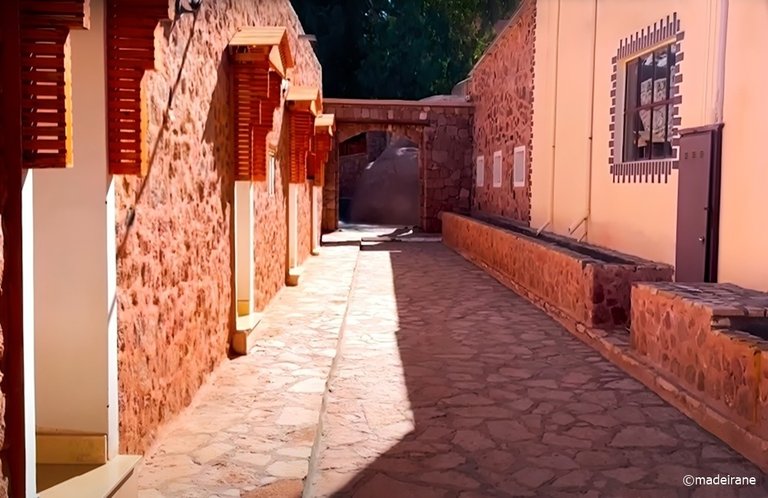
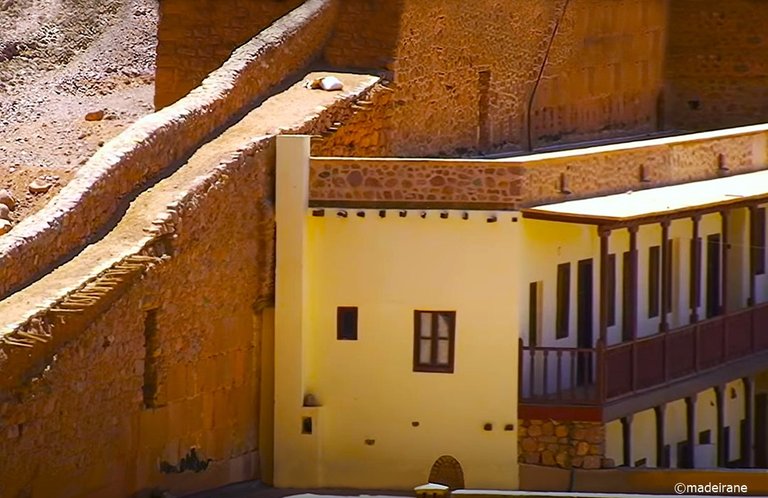
Entering the central temple, you will fall into the atmosphere of antiquity. The church is richly furnished. The wall paintings are faded, but the images are bright, and the plots are saturated. Unique mosaic of the Transfiguration of God! Very beautiful chandeliers and lamps. Railings and fences are made of carved wood. Many patterns. Beautiful wooden balconies and seats. Ancient rich iconostasis.
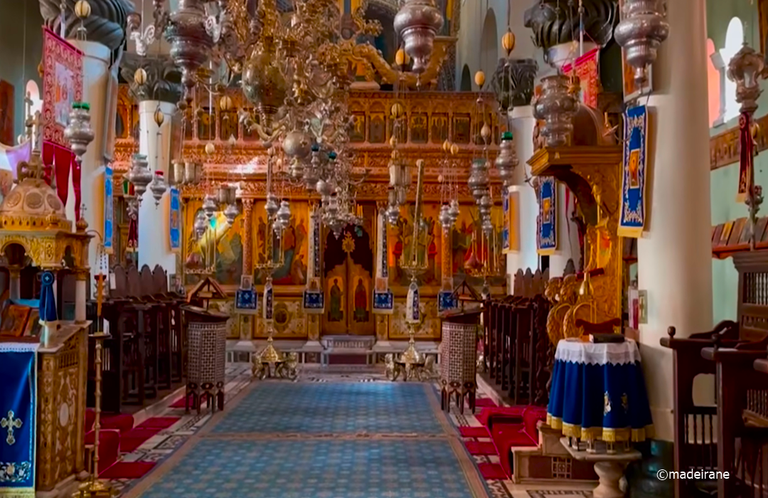
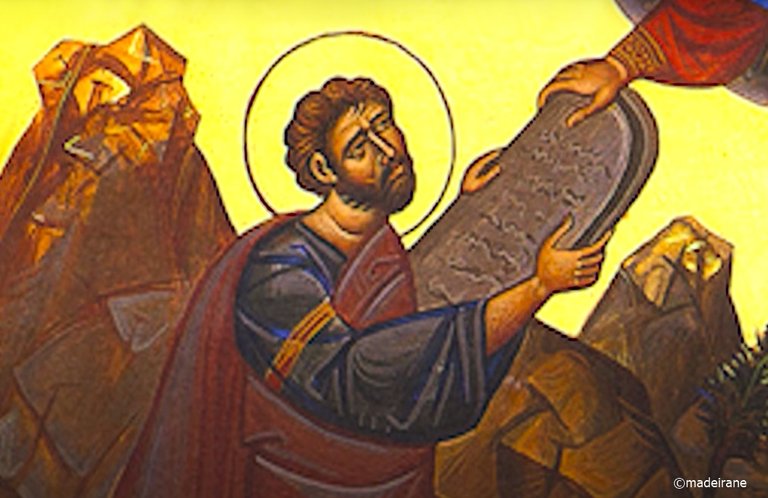
There are 12 beautiful columns in the temple, and the floor is made of marble. In the walls between the columns, there are niches in which the remains of the saints are kept. Entrance doors are carved from Lebanese cedar, approximately 1400 years old.
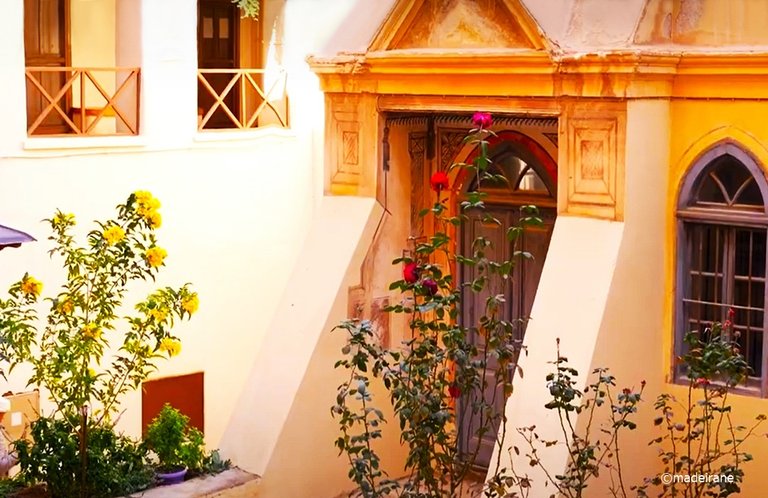
At the altar of the church there are two coffins, in which the remains of St. Catherine is kept: in one - the head, in the other - the right hand. They are the greatest relics of Christians. People, pilgrims from all over the world come to the monastery and worship these relics.
Near the temple is a well that has been preserved in this place since the time of the prophet Moses. They still take water from it for the needs of the monastery.
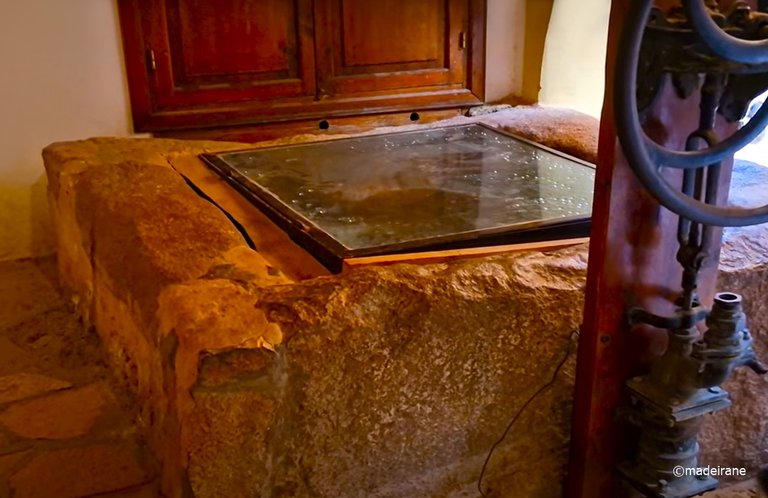
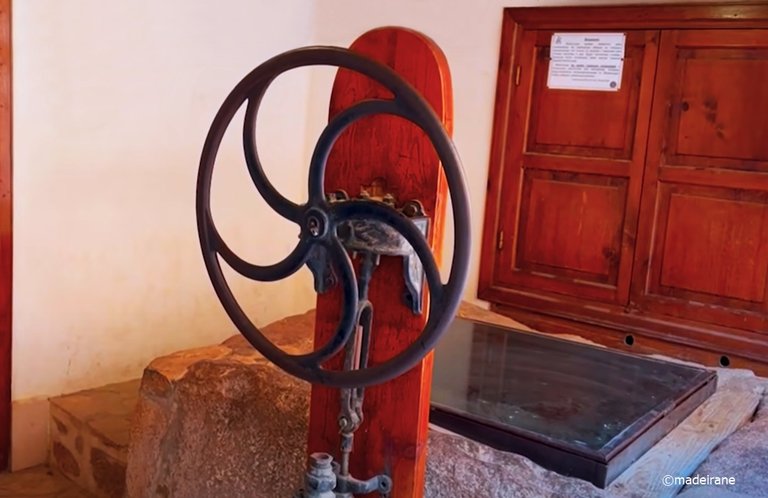
There is a museum of antiquities in the monastery. If you come with a group, you can enter for free. Some things are so old that they are even stored in special sarcophagi.

The monastery is famous for its extensive collection of icons - very ancient. In general, the Coptic style of iconography is a separate topic. There is also a miraculous image of the Virgin, written in the XIII century. In total, about 2,000 unique icons (one of a kind) are stored in the monastery's reserves. And it seemed to me that I was in some fairy-tale world, and this world is grandiose.
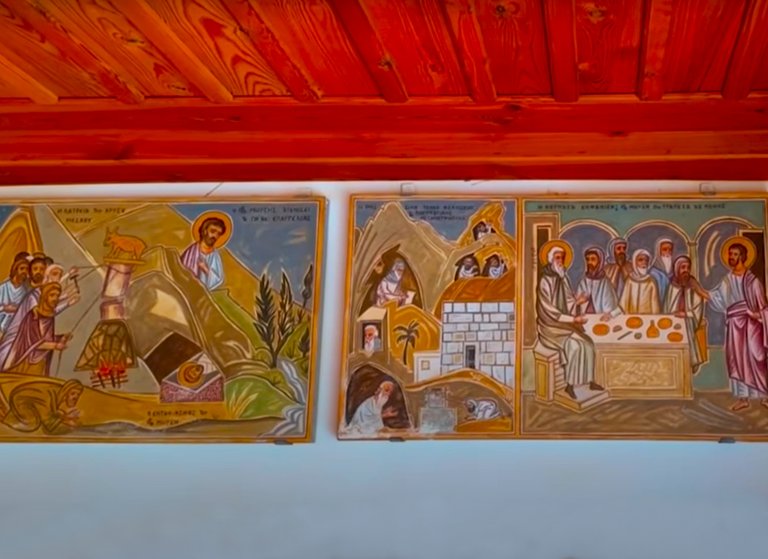
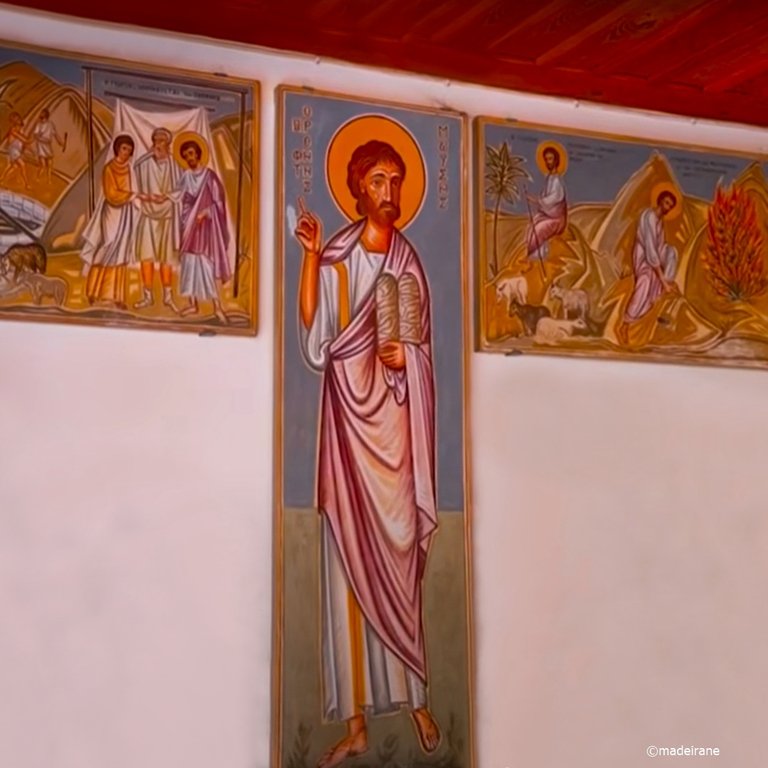
There is a great library which stores valuable manuscripts: the Sinaitic and Syrian codes, the Sinaitic psaltery and the Greek Gospel of 717. And, in general, there are about 4,000 manuscripts and 2,000 scrolls written in various languages. About 5,000 books of all kinds have been collected. It's amazing to see that everything was well preserved here.
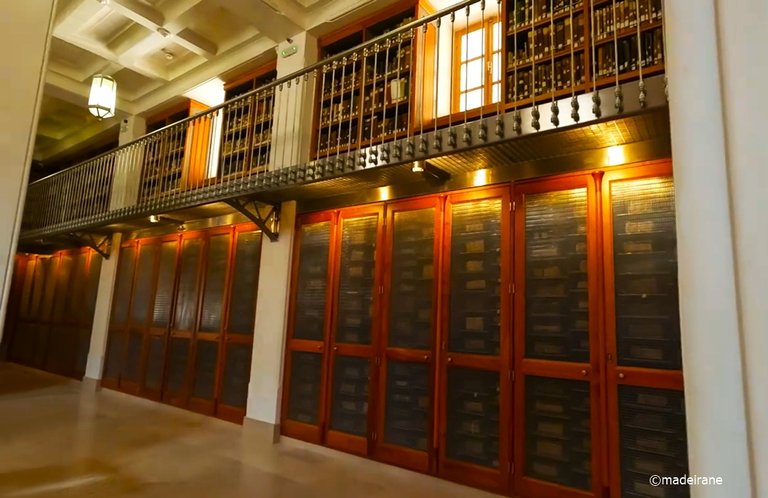
During centuries, the monastery of Saint Catherine built an impeccable reputation. They say that even many important dignitaries of the Islamic world helped him. Until the 10th century, Egypt was Christian. And after they accepted Islam here, they built a mosque on the territory of the monastery. This is a paradox, but it saved the monastery from destruction. It was never captured by anyone, and, moreover, robbed.
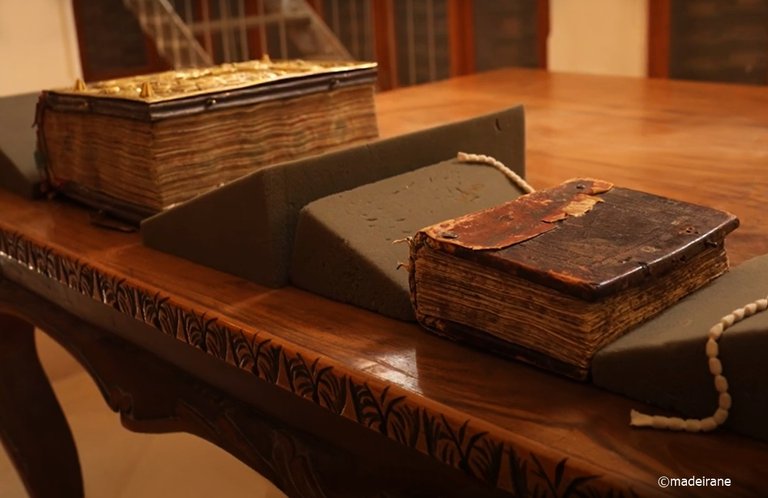
Copts are ancient Egyptian Christians who, sacrificing their lives, preserved the Christian faith in these Muslim territories. The Coptic Church is the Church of martyrs. Everything is serious there. In order not to renounce Christ during persecution and torture, they tattooed crosses on their wrists (to remove the cross, it was necessary to cut off the hand). Some Egyptian Christians have crosses on their foreheads (not a bright tattoo, but barely noticeable, so as not to distort the face).
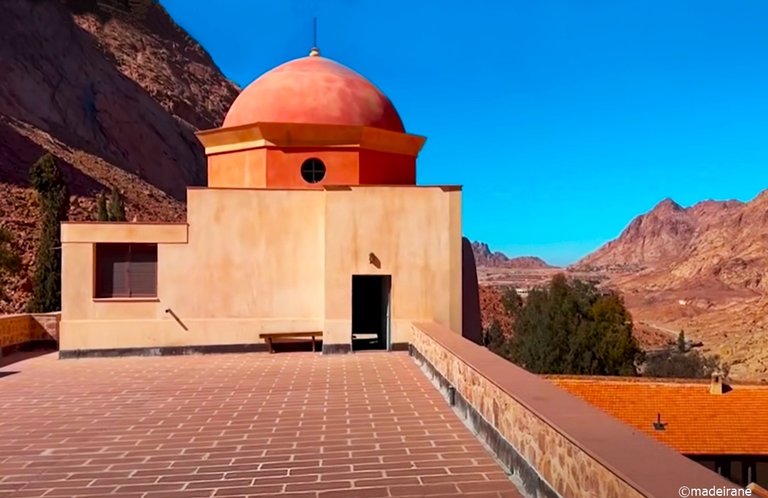
Be sure to visit the chapel of the Burning Bush. The bush is mentioned in the Bible. When the prophet Moses was tending sheep in a meadow, he saw a bush that was burning with flames but could not burn down. He went to look, and it was here that God appeared to him.
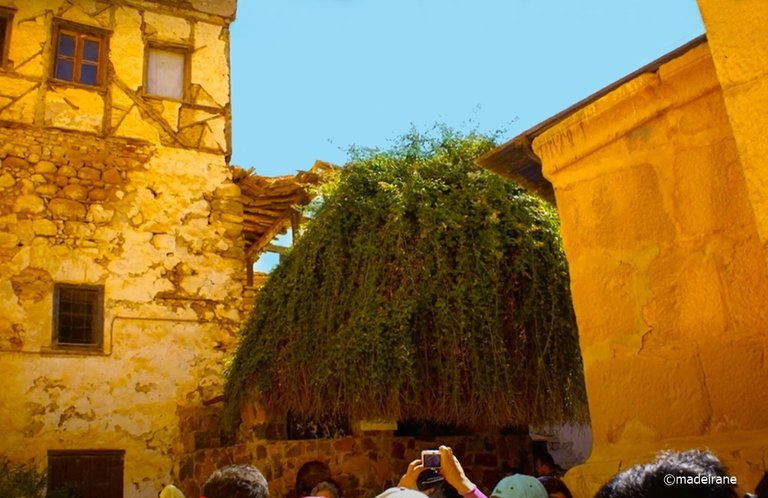
The chapel was built exactly on the spot where this bush grew. There is no iconostasis in the chapel that separates the prayer hall from the altar - specifically so that pilgrims can see the place where the Bush grew in Old Testament times. The bush itself was transplanted outside the chapel.
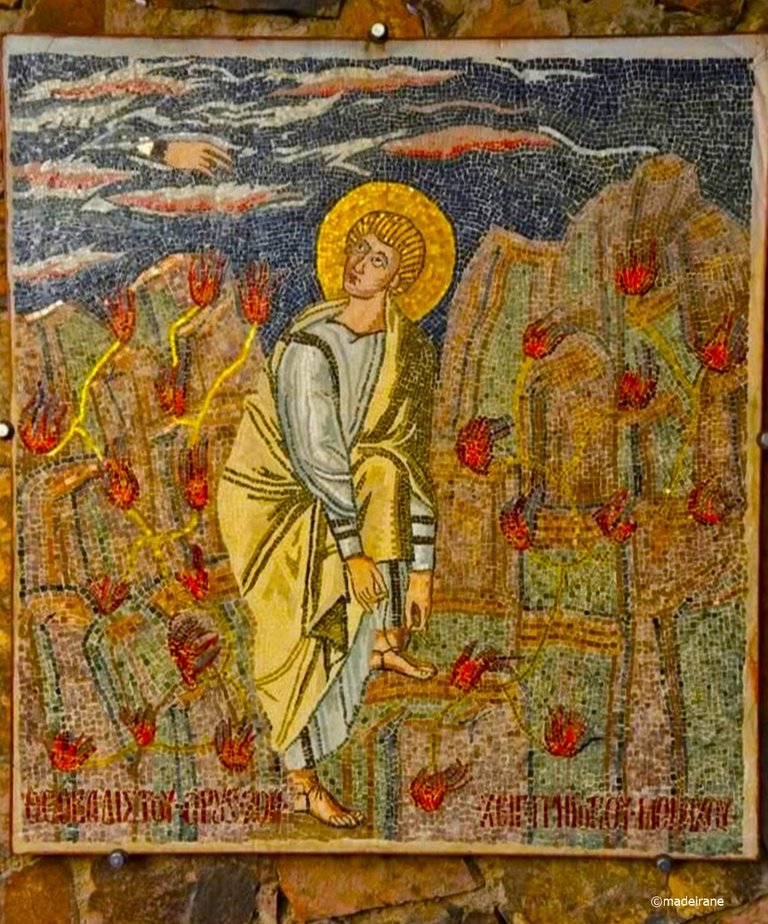
There are many chapels, and each of them is a separate architectural masterpiece. A very beautiful monastery refectory, decorated with unique frescoes depicting angels and bright flowers.
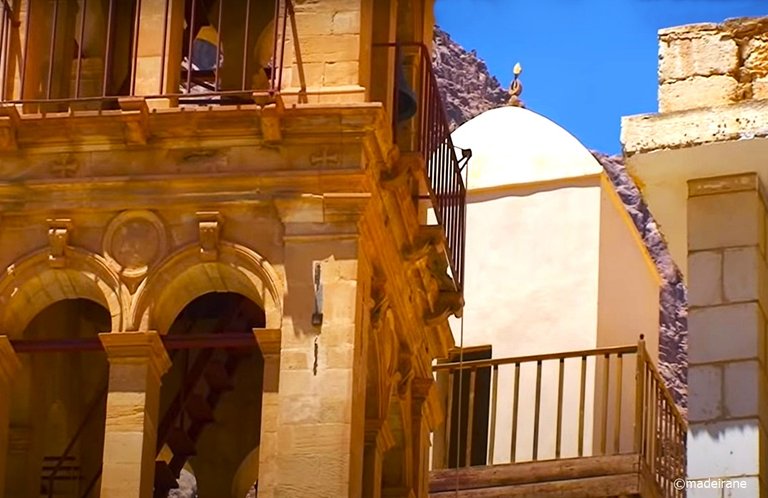
Not far away, behind the monastery walls, there is a gorgeous garden. An ancient underground passage connects it and the monastery territory. It has many different trees: apple, pear, pomegranate, mulberry, almond and cherry. There are many vineyards. A large area is allocated for an olive grove. The Catherine Monastery is famous for its excellent oil of its own production. Vegetables are also grown here. I have seen many gardens in Egypt. I think, this is the best garden in the country.
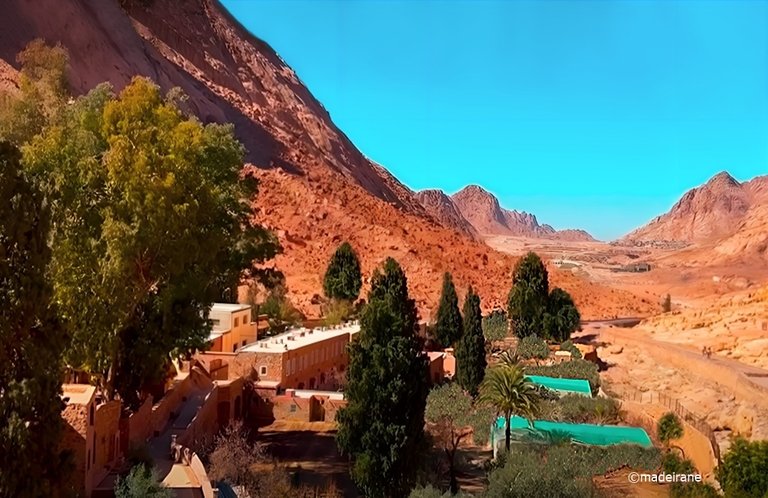
All visitors are given silver rings by local monks with the inscription: "Holy Martyr Catherine, pray to God for us!" They can be without inscriptions, but only with the letter "K" in a heart.
The monastery is surrounded by a strong fence - from fortress walls. It was built specifically in a defensive style by Emperor Justinian. There is a burial place for monks outside the monastery walls. They are buried in an original way: several ready-made stone graves are used for burial, and after only bones remain, they are removed from the grave, stored, and the grave is ready for use again. And they are stored in an interesting way: by type of bone (skulls - separately).
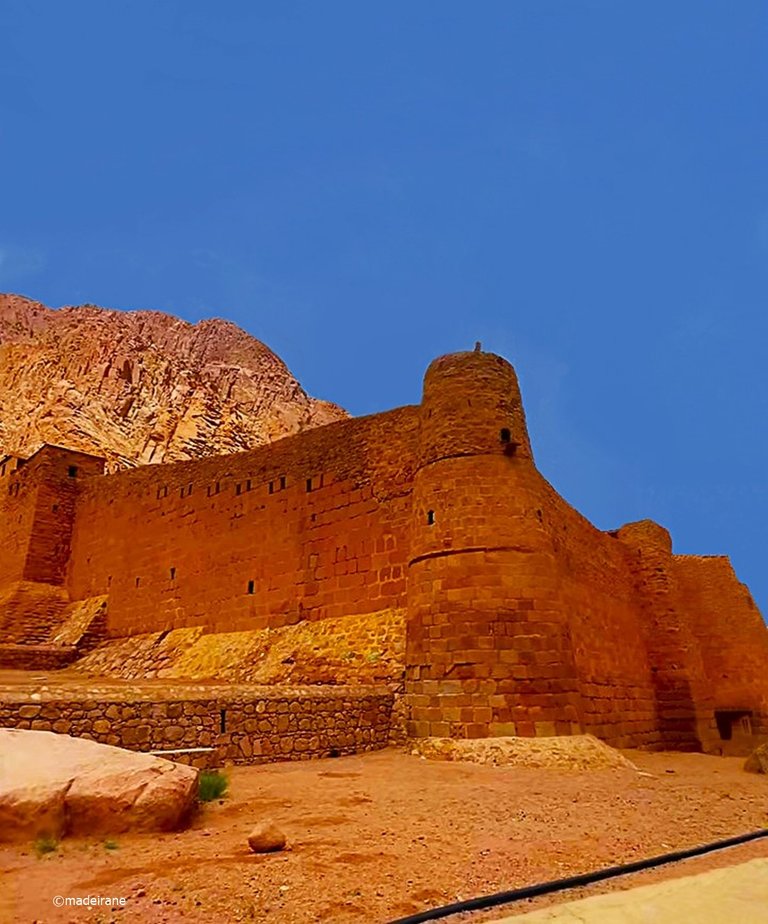
In 2002, this monastery was added to the UNESCO World Heritage List. The monastery is open to visitors every day, from nine to twelve in the morning.
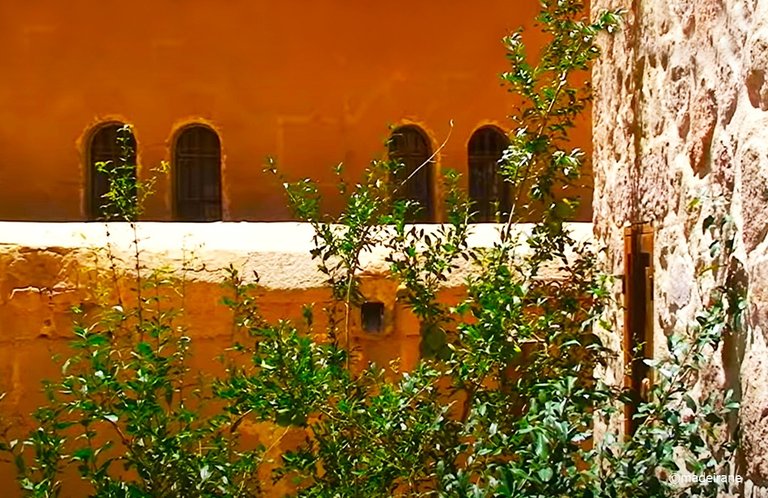
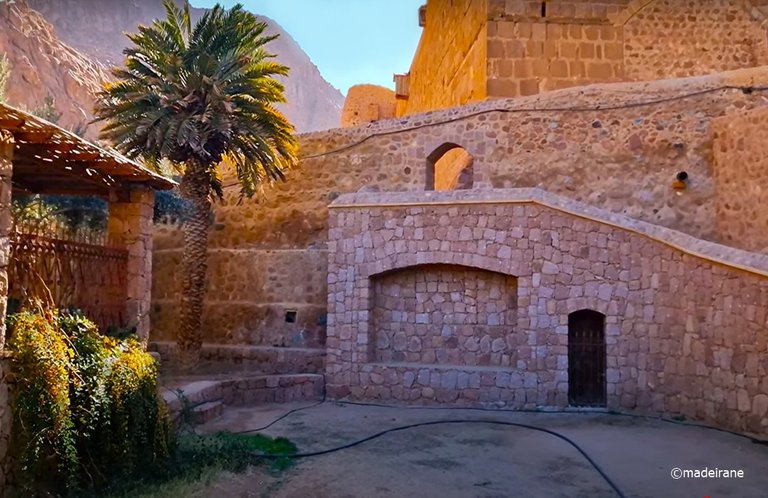
But what happens there the rest of the time, how the monks live, what they do, and in general what the atmosphere is like there - all this is still a mystery to me. But I hope it is temporary, since every secret once becomes clear.
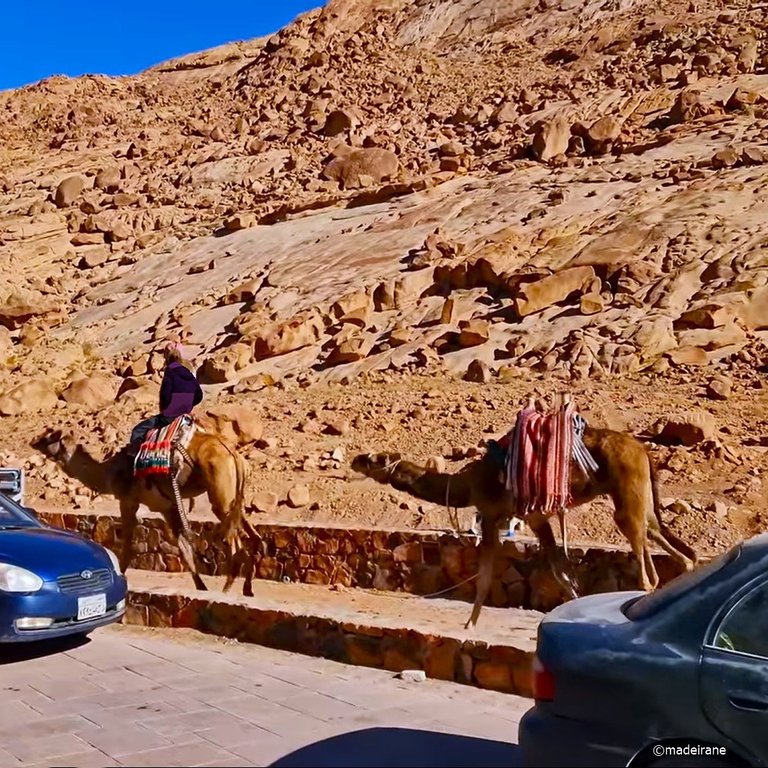
💝💝💝💝💝💝💝💝💝💝
Photos are taken by me.
© 2025With love, @madeirane
Translated from Lithuanian with DeepL.com (free version)
Jau rašiau apie Mozės kalną, į kurį užkopėme. Iš tokio grožio, griežto ir galingo, nepastebimai nusileidome į pačią šventyklą. Tai seniausias krikščionių vienuolynas, turintis mažiausią vyskupiją pasaulyje. Pirmoji, kuri čia pradėjo statyti šias vietas, buvo šventoji Elena, imperatoriaus Konstantino motina. Dabar čia tarsi stebuklas dykumoje - alyvmedžių sodai. Mergelės Marijos garbei jie pastatė nedidelę koplytėlę.
Vienuolynas įsikūręs Sinajaus kalno papėdėje. Aplink - didžiulė Egipto dykuma. Natūralios žalumos yra, ko gero, tik vienuolyno apylinkėse. Ji puikiai dera su senoviniais pastatais, sudarydama architektūrinį ir parko ansamblį. Kitose vietose ji auginama dirbtinai.
Tai senovinis vienuolynas, įkurtas IV amžiuje. Vienuoliai iki šių dienų saugo šią senovę: architektūrinius bruožus, šventyklos tapybą, atmosferą, taip pat konstitucinius garbinimo ir vienuolyno funkcionavimo bruožus.
Katerinos istorija labai įdomi ir ilga. Katerina, gimusi kaip Dorotėja, gyveno turtingoje Aleksandrijos šeimoje. Ji buvo labai apsiskaičiusi ir išmintinga, turtinga, sąžininga ir tiesiog graži. Tokios nuotakos visi norėjo į žmonas, bet ji visus atstūmė. Kartą dykumoje ji sutiko seną vyrą, kuris pasakė, kad pažįsta tokį jaunikį, kad jis ateis pas ją sapne. O kai sapne ji išvydo Dievo Sūnų, kuris jai pasakė, kad reikia grįžti pas senelį ir sužinoti tiesą, Katerina patikėjo, kad krikščionybė yra stipresnė už pagonybę. Ir ji pasikrikštijo. Ir ji atnešė žmonėms tikėjimą.
Dėl savo krikščioniškumo tais metais ji patyrė daugybę kankinimų. Tačiau ji neišsižadėjo savo tikėjimo. O kai jai buvo įvykdyta mirties bausmė, legendoje aprašoma, kad iš jos žaizdų tekėjo ne kraujas, o pienas, ir po egzekucijos jos relikvijos dingo. Angelai jos relikvijas nunešė į netoli vienuolyno esantį kalną (tai aukščiausias Sinajaus kalnas), kur po kelių šimtmečių šventosios relikvijas surado ir perkėlė į šventyklą. Šiandien po pamaldų kiekvienas gali prisiliesti prie šios šventovės.
Įžengę į centrinę šventyklą pasijusite kaip senovėje. Bažnyčia gausiai įrengta. Sienų tapyba išblukusi, tačiau vaizdai ryškūs, o siužetai sodrūs. Unikali Dievo Atsimainymo mozaika! Labai gražūs šviestuvai ir lempos. Turėklai ir tvorelės pagaminti iš raižyto medžio. Daugybė raštų. Gražūs mediniai balkonai ir sėdynės. Senovinis turtingas ikonostasas.
Šventykloje yra 12 gražių kolonų, grindys iš marmuro. Sienose tarp kolonų yra nišos, kuriose saugomi šventųjų palaikai. Įėjimo durys išdrožtos iš Libano kedro, maždaug 1400 metų senumo.
Prie bažnyčios altoriaus yra du karstai, kuriuose laikomi šventosios Katerinos palaikai: viename - galva, kitame - dešinė ranka. Jos laikomos didžiausiomis krikščionių šventosiomis. Pagarbinti relikvijų į vienuolyną vyksta žmonės iš viso pasaulio.
Netoli šventyklos yra šulinys, kuris šioje vietoje išliko nuo pranašo Mozės laikų. Iš jo vis dar imamas vanduo vienuolyno reikmėms.
Vienuolyne yra senovinių daiktų muziejus. Jei atvykstate su grupe, įėjimas nemokamas. Jus nustebins eksponatų įvairovė. Kai kurie daiktai tokie seni, kad net saugomi specialiuose sarkofaguose.
Vienuolynas garsėja gausia ikonų kolekcija - labai senoviška. Apskritai koptų ikonografijos stilius yra atskira tema. Čia taip pat yra stebuklingasis Mergelės paveikslas, sukurtas XIII a. Iš viso vienuolyno saugyklose saugoma apie 2000 unikalių (vienetinių) ikonų. Ir man atrodė, kad atsidūriau kažkokiame pasakų pasaulyje, o šis pasaulis yra grandiozinis.
Vienuolyne yra gausi biblioteka, kurioje saugomi vertingi rankraščiai: Sinaito ir Sirijos kodeksai, Sinaito psalmynas ir 717 m. graikų evangelija. O apskritai yra apie 4000 rankraščių ir 2000 įvairiomis kalbomis parašytų ritinių. Surinkta apie 5000 įvairiausių knygų. Nuostabu matyti, kaip čia viskas buvo išsaugota.
Per visą istoriją Šventosios Katerinos vienuolynas turėjo nepriekaištingą reputaciją. Sakoma, kad jam padėdavo net daugelis svarbių islamo pasaulio dignitorių. Iki X a. Egiptas buvo krikščioniškas. O čia priėmus islamą, vienuolyno teritorijoje buvo pastatyta mečetė. Tai paradoksas, bet būtent tai išgelbėjo vienuolyną nuo sunaikinimo. Jo niekas niekada nebuvo užgrobęs ir apiplėšęs.
Koptai - tai senovės Egipto krikščionys, kurie, aukodami savo gyvybes, išsaugojo krikščionių tikėjimą šiose musulmoniškose teritorijose. Koptų Bažnyčia yra kankinių Bažnyčia. Ten viskas rimta. Kad per persekiojimus ir kankinimus neišsižadėtų Kristaus, jie ant riešų išsitatuiruodavo kryžių (norint pašalinti kryžių, reikėjo nupjauti ranką). Kai kurie Egipto krikščionys ant kaktos turi kryžių (ne ryški tatuiruotė, bet vos pastebima, kad neiškreiptų veido).
Būtinai aplankykite Degančio krūmo koplyčią. Šis krūmas minimas Biblijoje. Kai pranašas Mozė ganė avis pievoje, jis pamatė krūmą, kuris degė liepsnomis, bet negalėjo sudegti. Jis nuėjo pažiūrėti, ir čia jam pasirodė Dievas.
Koplyčia buvo pastatyta būtent toje vietoje, kur augo šis krūmas. Koplyčioje nėra ikonostaso, skiriančio maldos salę nuo altoriaus, - specialiai tam, kad piligrimai galėtų matyti vietą, kurioje Senojo Testamento laikais augo krūmas. Pats krūmas buvo persodintas už koplyčios ribų.
Koplyčių yra daug, ir kiekviena jų - atskiras architektūros šedevras. Labai gražus vienuolyno refektorius. Papuošta unikaliomis freskomis, vaizduojančiomis angelus ir ryškias gėles.
Netoliese, už vienuolyno sienų, yra nuostabus sodas. Jį ir vienuolyno teritoriją jungia senovinė požeminė perėja. Jame auga daug įvairių medžių: obelų, kriaušių, granatų, šilkmedžių, migdolų ir vyšnių. Yra daug vynuogynų. Didelis plotas skirtas alyvmedžių giraitei. Katerinos vienuolynas garsėja puikiu savo gamybos aliejumi. Čia taip pat auginamos daržovės. Egipte mačiau daug sodų. Manau, kad tai geriausias sodas šalyje.
Visiems lankytojams vietos vienuoliai dovanoja sidabrinius žiedus su užrašu: „Švenčiausioji kankinė Kotryna, melsk už mus Dievą!“ Jie gali būti ir be užrašų, tik su širdelės formos raide „K“.
Vienuolyną juosia tvirta tvora - iš tvirtovės sienų. Ją specialiai gynybiniu stiliumi pastatė imperatorius Justinianas. Už vienuolyno sienų yra vienuolių laidojimo vieta. Jie laidojami originaliu būdu: laidojama keliuose paruoštuose akmeniniuose kapuose, o kai lieka tik kaulai, jie išimami iš kapo, saugomi, ir kapas vėl paruošiamas naudoti. Ir saugomi jie įdomiai: pagal kaulų rūšis (kaukolės - atskirai).
2002 m. šis vienuolynas įtrauktas į UNESCO pasaulio paveldo sąrašą. Vienuolynas lankytojams atviras kasdien, nuo devynių iki dvylikos ryto.
Tačiau kas ten vyksta likusį laiką, kaip gyvena vienuoliai, ką jie veikia ir apskritai kokia ten atmosfera - visa tai man tebėra paslaptis. Bet tikiuosi, kad tai laikina, nes kiekviena paslaptis vieną kartą tampa aiški.
You can check out this post and your own profile on the map. Be part of the Worldmappin Community and join our Discord Channel to get in touch with other travelers, ask questions or just be updated on our latest features.
such a beautiful place to visit